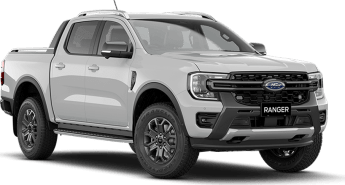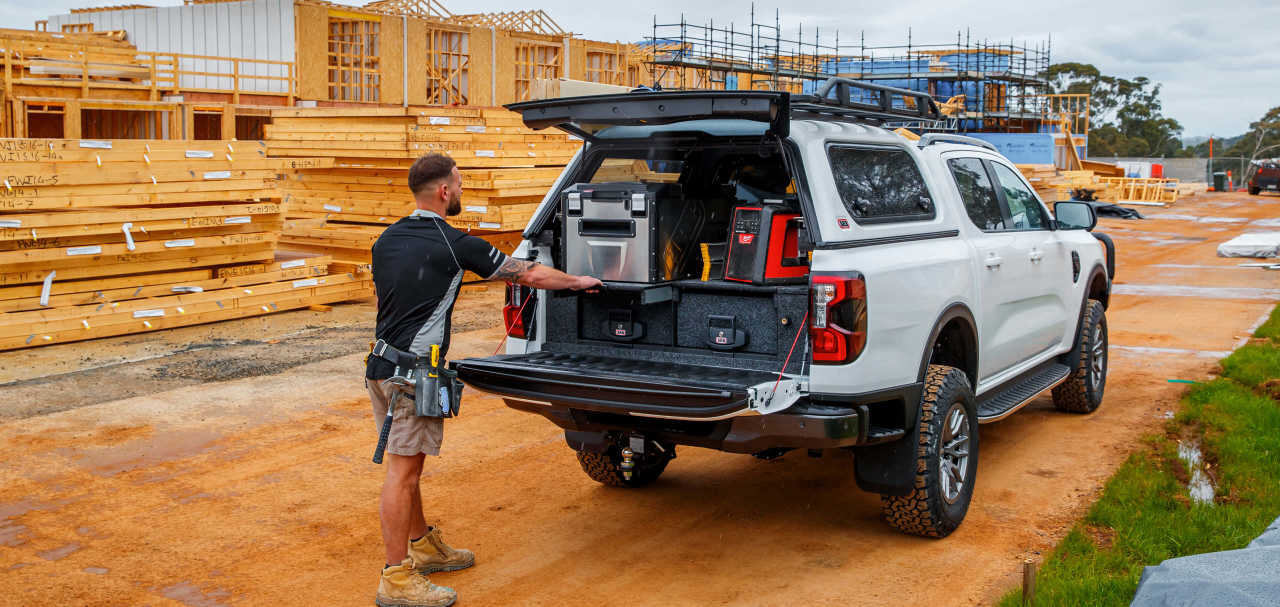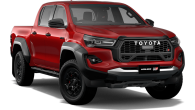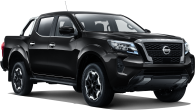When the all-new T6 Ford Ranger was released in 2011, Ford made sure its big bruiser was never short of grunt. The premium engine choice at launch was a punchy 3.2-litre inline five-cylinder turbo-diesel with 147kW/470Nm, soon followed by a new Bi-Turbo 2.0-litre four-cylinder which literally ‘boosted’ power output to 157kW/500Nm.
However, Ford had something even better in store for the latest T6.2 or ‘Next Gen’ Ranger in the form of a sublime 3.0-litre V6 turbo-diesel with unprecedented outputs of 184kW/600Nm. That represents a substantial 25 per cent increase in power and even larger 28 per cent increase in torque in a decade.
So, given these big gains, we jumped at the opportunity to put the new V6 to work for a week to see how it performs in the dual roles of weekday tradie workhorse and weekend escape machine.
Ford Ranger 2023: XLT 3.0 (4X4)
| Engine Type | Diesel Turbo V6, 3.0L |
|---|---|
| Fuel Type | Diesel |
| Fuel Efficiency | 8.4L/100km (combined) |
| Seating | 5 |
| Price From | $57,860 - $66,550 |
| Safety Rating |
|
Price and Features – Does it represent good value for the price? What features does it come with?
Our test vehicle, finished in Absolute Black, is the XLT model grade. Available in 4x2 or 4x4 and a choice of body styles, the XLT comes standard with a 2.0-litre Bi-Turbo four-cylinder diesel and 10-speed automatic. However, for an extra $3000 you can upgrade to the optional 3.0-litre V6 like our example, which with 10-speed automatic has a list price of $64,190 plus ORCs.
The XLT has most of the XLS features and adds unique 17-inch wheels and 255/70 R17 all-season tyres plus a full-size steel spare tucked under the tail. There’s also an electronic parking brake, four-wheel disc brakes, black sports bar, load tub illumination, full tub-liner with a handy 12-volt socket, rain-sensing wipers and LED headlights with signature ‘C-Clamp’ LED daytime running lights.
The cabin also steps up a notch with smart keyless entry and push-button start, dual-zone climate with rear passenger vents, leather-wrapped steering wheel and gear-shifter, electrochromatic mirror and an expanded multimedia system with sat-nav, TMC (traffic message channel), DAB digital radio and voice assistant. You also get two 12-volt accessory plugs and three USB ports.
.jpg)
Design – is there anything interesting about its design?
The Next Gen’s styling looks so fresh and modern that it’s made the more curvaceous previous generation look like, well, the previous generation. So, if that was part of Ford’s plan to get buyers to upgrade to the latest and greatest, then it has succeeded.
Traditionally the XLT has been the ‘home of chrome’ but there’s clearly been a re-think here as you don’t see your reflection nearly as much. Sure, the grille has a unique chrome central bar, but the door mirrors and handles are now body-coloured which combined with the ‘dark sparkle’ wheel finish gives the XLT less of the USA-style bling that previously characterised this model grade.
.jpg)
We like the new 10.0-inch portrait-style touchscreen with Ford’s wonderfully intuitive software, which serves as ‘central command’ for numerous multimedia and climate control functions. And we particularly like having the choice of using either touchscreen or good old mechanical dials when adjusting temperatures and audio volume.
In that context, we would also encourage Ford to return to its digital round-faced tachometer rather than the new vertical ‘bar graph’ style, which is harder to read and doesn’t look right in a tough truck like this. Or at least give owners the option of switching between either style.

Engine and transmission – What are the key stats for the engine and transmission?
The new 3.0-litre V6 turbo-diesel has a proven history of service in different configurations across numerous Ford models. These include the Territory SUV (with smaller displacement), Ford F-150 pick-up and even some Land Rover/Range Rover variants when under Ford ownership.
So, it’s been around the block a few times and as a result offers peerless standards of performance and refinement. In its Ranger configuration it produces 184kW at 3250rpm and a towering 600Nm of torque between 1750-2250rpm, which sets a new benchmark for this category.
It’s mated to Ford’s 10R80 10-speed torque convertor automatic which also offers sequential manual-shifting and four drive modes comprising Normal, Eco, Slippery and new Tow/Haul mode. The part-time, dual-range 4x4 system in V6 form has a new full-time setting on the console dial shown as 4A, which automatically distributes power between the front and rear axles as required – ideal for icy or snow-covered roads. There’s also a lockable rear diff.
.jpg)
Fuel consumption – How much fuel does it consume?
Ford claims a combined average of 8.4L/100km which is almost 2.0L lower than the 10.3L shown on the dash display after our 304km of testing, which comprised city, suburban and highway driving with about one third of that distance hauling its maximum payload.
Our own figure, calculated from fuel bowser and tripmeter readings and with the engine stop/start function switched off, was higher still at 11.8L/100km which is in the same ballpark as the Amarok’s 3.0-litre V6. So, based on our ‘real world’ figures, you could expect a driving range of around 680km from its 80-litre tank.
Practicality – How practical is the space inside?
The V6 XLT has a 2285kg kerb weight which when deducted from its 3280kg GVM leaves a 995kg payload rating. That’s close enough to being a genuine ‘one tonner’ in our book.
It’s also rated to tow up to the class-benchmark 3500kg of braked trailer and with its 6400kg GCM (how much it can legally carry and tow at the same time) the peak payload would need to be reduced to 615kg (a drop of 380kg) to legally tow that weight. Or you could lower the trailer weight by the same amount to 3120kg and keep the full payload rating. Either way, they’re large and useful numbers for a multitude of work and recreational needs.
The load tub’s floor is 1547mm long and 1584mm wide with a 1413mm rear opening. And, thanks to the new Ranger’s wider track, there’s now 1224mm between the wheel housings. This trumps its predecessor by being able to carry either a 1165mm-square standard Aussie pallet or 1200 x 800mm Euro pallet, secured by six load anchorage points.
_0.jpg)
There’s also handy internal lighting in the side walls and the tailgate can double as a mobile workbench, with an integrated 1.3-metre ruler and two spring-loaded ‘trapdoors’ that allow the use of g-clamps to hold materials in place. However, the ruler needs to be made from a tougher material than plastic, as numerous increments on the one fitted to our near-new test vehicle had already been erased by bumps and scrapes during previous loading.
Cabin storage starts with large and small-bottle holders in each front door plus an overhead glasses holder and a single glovebox with narrow storage shelf above. The centre console has flat-pad storage for a phone at the front (not wireless charging though), cup/bottle holders in the centre and a box at the rear with padded lid which doubles as an elbow rest.
Rear seat passengers get large and small-bottle holders and shorter bins in the base of each door, flexible pouches on each front seat backrest and a fold-down centre armrest with two cupholders. The rear seat’s base cushion, which swings up to reveal two underfloor storage bins, can also be stored in a vertical position if more internal load space is required.
.jpg)
What’s it like as a daily driver?
There are entry-assist handles on both A and B pillars and its easy to find a comfortable driving position with the eight-way adjustable driving seat, height-and-reach adjustable steering wheel and big left footrest.
It drives more like a car than ever; very quiet with an unladen ride quality that’s superb on all surfaces. The longer wheelbase and wider track enhance the previous generation’s sure-footed feel, displaying minimal body roll when cornering. The steering weight and response is arguably the best in the business, although it does get noticeably heavier in the new full-time 4x4 mode. The suspension is impressively supple over bumpy roads yet maintains a disciplined ride quality.
_0.jpg)
Smooth, quiet and powerful, the V6 engine sets a new benchmark for refinement. Its minimal NVH (noise, vibration, harshness) levels are superior not only to all Ranger four-cylinder turbo-diesels but also the original in-line five-cylinder which felt a little lumpy compared to this jigger.
The strong and relentless surge it delivers in its peak torque zone is like being thrust forward on a powerful wave. 600Nm of torque ensures it pulls like a locomotive, not only in its relatively narrow maximum torque band between 1750-2250rpm but from 1500rpm right through to optimum power at 3250rpm.
As you’d expect, it’s also effortless on the highway, taking full advantage of overdrive on the top three gears to require only about 1600rpm at 100km/h and 1800rpm at 110km/h. Engine, tyre and wind noise are low at these speeds and conversations can take place without raised voices.
What’s it like for tradie use?
We forklifted 890kg into the load tub which with driver equalled a 990kg payload that all but equalled its 995kg limit. The rear leaf-springs compressed almost 60mm under this weight but Ford has replaced the previous hard bump-stop rubbers, mounted on the chassis rails above the rear axle, with longer and fatter cone-shaped jounce bumpers.
These engage with the springs in compression to provide a second stage of load support and eliminate the hard thumps that come from traditional bump-stops at full suspension travel. As a result, with this peak payload the Ranger produced a noticeably smooth ride, without a thud to be heard as it floated over large bumps and dips.
_0.jpg)
If engines could laugh out loud, this one would have when faced with our 13 per cent gradient, 2.0km set climb, hauling this load to the summit as though it had no load at all. Engine-braking on the way down in a manually-selected second gear was equally masterful, with speeds easily remaining below the posted 60km/h limit without once needing to press the brake pedal.
This is another example of why we like ute (and van) engines with relatively large displacements (3.0-litres plus) because they offer engine-braking that smaller engines simply can’t match, particularly when restraining big payloads.
Warranty & Safety Rating
Safety – What safety equipment is fitted? What safety rating?
Fresh 2022 five-star ANCAP rating. Comes equipped with nine airbags and cutting-edge active safety headlined by AEB and post-impact braking, blind-spot monitoring with cross-traffic alert and trailer coverage, evasive steer assist, lane-keeping assist, reverse brake assist, front and rear parking sensors, traffic sign recognition, tyre pressure monitoring, rear-view camera, adaptive cruise control and more. There’s also ISOFIX and top tethers on the two outer rear seating positions.
Ownership – What does it cost to own? What warranty is offered?
The Ranger is covered by Ford's five years/unlimited km warranty. Scheduled servicing every 12 months/15,000km whichever occurs first. Capped-price servicing for first five scheduled services up to 60 months/75,000km totals $2520 or an average of $504 per service.
Verdict
The new 3.0-litre V6 is the best turbo-diesel ever offered in a Ford Ranger and we reckon it’s worth every one of the 3000 extra dollars you’ll pay for the privilege. Combined with the other advances in the latest Ranger generation, we can’t pinpoint anything that’s worthy of major criticism. It really is that good.
Pricing Guides




.jpg)
.jpg)

.jpg)








.jpg)


.jpg)

.jpg)
.jpg)

Comments